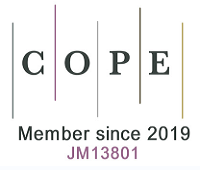REFERENCES
1. Bray F, Laversanne M, Sung H, et al. Global cancer statistics 2022: GLOBOCAN estimates of incidence and mortality worldwide for 36 cancers in 185 countries. CA Cancer J Clin. 2024;74:229-63.
2. Guo L, Lee YT, Zhou Y, Huang Y. Targeting epigenetic regulatory machinery to overcome cancer therapy resistance. Semin Cancer Biol. 2022;83:487-502.
3. Hou X, Du C, Lu L, et al. Opportunities and challenges of patient-derived models in cancer research: patient-derived xenografts, patient-derived organoid and patient-derived cells. World J Surg Oncol. 2022;20:37.
4. Bleijs M, van de Wetering M, Clevers H, Drost J. Xenograft and organoid model systems in cancer research. EMBO J. 2019;38:e101654.
5. Sato T, Vries RG, Snippert HJ, et al. Single Lgr5 stem cells build crypt-villus structures in vitro without a mesenchymal niche. Nature. 2009;459:262-5.
6. Sato T, Stange DE, Ferrante M, et al. Long-term expansion of epithelial organoids from human colon, adenoma, adenocarcinoma, and Barrett’s epithelium. Gastroenterology. 2011;141:1762-72.
7. Schutgens F, Clevers H. Human organoids: tools for understanding biology and treating diseases. Annu Rev Pathol. 2020;15:211-34.
8. Chen D, Xu L, Xuan M, Chu Q, Xue C. Unveiling the functional roles of patient-derived tumour organoids in assessing the tumour microenvironment and immunotherapy. Clin Transl Med. 2024;14:e1802.
9. Rodrigues J, Heinrich MA, Teixeira LM, Prakash J. 3D in vitro model (R)evolution: unveiling tumor-stroma interactions. Trends Cancer. 2021;7:249-64.
10. Sachs N, Papaspyropoulos A, Zomer-van Ommen DD, et al. Long-term expanding human airway organoids for disease modeling. EMBO J. 2019;38:e100300.
11. Kim M, Mun H, Sung CO, et al. Patient-derived lung cancer organoids as in vitro cancer models for therapeutic screening. Nat Commun. 2019;10:3991.
12. Lau HCH, Kranenburg O, Xiao H, Yu J. Organoid models of gastrointestinal cancers in basic and translational research. Nat Rev Gastroenterol Hepatol. 2020;17:203-22.
13. Zhao H, Cheng Y, Kalra A, et al. Generation and multiomic profiling of a TP53/CDKN2A double-knockout gastroesophageal junction organoid model. Sci Transl Med. 2022;14:eabq6146.
14. Guo W, Li L, He J, et al. Single-cell transcriptomics identifies a distinct luminal progenitor cell type in distal prostate invagination tips. Nat Genet. 2020;52:908-18.
15. Artegiani B, Hendriks D, Beumer J, et al. Fast and efficient generation of knock-in human organoids using homology-independent CRISPR-Cas9 precision genome editing. Nat Cell Biol. 2020;22:321-31.
16. Ren X, Chen W, Yang Q, Li X, Xu L. Patient-derived cancer organoids for drug screening: basic technology and clinical application. J Gastroenterol Hepatol. 2022;37:1446-54.
17. Bao YL, Wang L, Pan HT, et al. Animal and organoid models of liver fibrosis. Front Physiol. 2021;12:666138.
18. Zhang L, Zhao J, Liang C, Liu M, Xu F, Wang X. A novel biosensor based on intestinal 3D organoids for detecting the function of BCRP. Drug Deliv. 2017;24:1453-9.
19. Feng JL, Wen Z. Research status and application of organoids in head and neck malignant tumor. Chin J Otorhinolaryngol Skull Base Surg. 2021;27:488-92. (in Chinese).
20. Zhou LL. Establishment of organoid culture technology for circulating tumor stem cells and single cell isolation and labeling technology. Master’s Thesis, Peking Union Medical College, Beijing, China, 2019. Available from https://cdmd.cnki.com.cn/Article/CDMD-10023-1019267737.htm [accessed 23 June 2025].
21. Deng J. A study on detection, identification and biological characteristics of slow-cycling cancer cells. Master’s Thesis, Huazhong University of Science and Technology, Wuhan, China, 2022. Available from https://d.wanfangdata.com.cn/thesis/D03000869 [accessed 23 June 2025].
22. Li YJ, Wang YX, Mu YQ et al. Exploration of the regulation of miRNAs by CUL4B in colorectal cancer patient-derived tumor organoids. J Shanxi Datong Univ. 2023;39:67-72.
23. Ding S, Hsu C, Wang Z, et al. Patient-derived micro-organospheres enable clinical precision oncology. Cell Stem Cell. 2022;29:905-17.e6.
24. Thomas PB, Perera MPJ, Alinezhad S, et al. Culture of bladder cancer organoids as precision medicine tools. Available from: https://www.jove.com/v/63192/culture-of-bladder-cancer-organoids-as-precision-medicine-tools. [Last accessed on 23 Jun 2025].
25. Kasagi Y, Chandramouleeswaran PM, Whelan KA, et al. The esophageal organoid system reveals functional interplay between notch and cytokines in reactive epithelial changes. Cell Mol Gastroenterol Hepatol. 2018;5:333-52.
26. Geng R, Harland N, Montes-Mojarro IA, et al. CD24: a marker for an extended expansion potential of urothelial cancer cell organoids in vitro? Int J Mol Sci. 2022;23:5453.
27. Yoshida T, Singh AK, Bishai WR, McConkey DJ, Bivalacqua TJ. Organoid culture of bladder cancer cells. Investig Clin Urol. 2018;59:149-51.
28. Walz S, Pollehne P, Geng R, et al. A protocol for organoids from the urine of bladder cancer patients. Cells. 2023;12:2188.
29. Ebisudani T, Hamamoto J, Togasaki K, et al. Genotype-phenotype mapping of a patient-derived lung cancer organoid biobank identifies NKX2-1-defined Wnt dependency in lung adenocarcinoma. Cell Rep. 2023;42:112212.
30. Gao D, Vela I, Sboner A, et al. Organoid cultures derived from patients with advanced prostate cancer. Cell. 2014;159:176-87.
31. Kopper O, de Witte CJ, Lõhmussaar K, et al. An organoid platform for ovarian cancer captures intra- and interpatient heterogeneity. Nat Med. 2019;25:838-49.
32. Lee S, Mendoza TR, Burner DN, et al. Novel dormancy mechanism of castration resistance in bone metastatic prostate cancer organoids. Int J Mol Sci. 2022;23:3203.
33. Kijima T, Nakagawa H, Shimonosono M, et al. Three-dimensional organoids reveal therapy resistance of esophageal and oropharyngeal squamous cell carcinoma cells. Cell Mol Gastroenterol Hepatol. 2019;7:73-91.
34. Kim Y, Lee J, Kim S, Shin K. Culture, manipulation, and orthotopic transplantation of mouse bladder tumor organoids. Available from: https://www.jove.com/v/60469/culture-manipulation-orthotopic-transplantation-mouse-bladder-tumor. [Last accessed on 23 Jun 2025].
35. Norrie JL, Nityanandam A, Lai K, et al. Retinoblastoma from human stem cell-derived retinal organoids. Nat Commun. 2021;12:4535.
36. Liu H, Zhang Y, Zhang YY, et al. Human embryonic stem cell-derived organoid retinoblastoma reveals a cancerous origin. Proc Natl Acad Sci U S A. 2020;117:33628-38.
37. Geurts MH, de Poel E, Amatngalim GD, et al. CRISPR-based adenine editors correct nonsense mutations in a cystic fibrosis organoid biobank. Cell Stem Cell. 2020;26:503-10.e7.
38. Pineiro-Llanes J, da Silva L, Huang J, Cristofoletti R. Comparative study of basement-membrane matrices for human stem cell maintenance and intestinal organoid generation. J Vis Exp. 2024;205:e66277.
39. Lee SH, Hu W, Matulay JT, et al. Tumor evolution and drug response in patient-derived organoid models of bladder cancer. Cell. 2018;173:515-28.e17.
40. Rheinwald JG, Green H. Epidermal growth factor and the multiplication of cultured human epidermal keratinocytes. Nature. 1977;265:421-4.
41. Yuan B, Zhao X, Wang X, et al. Patient-derived organoids for personalized gallbladder cancer modelling and drug screening. Clin Transl Med. 2022;12:e678.
42. Wang HM, Zhang CY, Peng KC, et al. Using patient-derived organoids to predict locally advanced or metastatic lung cancer tumor response: a real-world study. Cell Rep Med. 2023;4:100911.
43. Sun H, Wang H, Wang X, et al. Aurora-A/SOX8/FOXK1 signaling axis promotes chemoresistance via suppression of cell senescence and induction of glucose metabolism in ovarian cancer organoids and cells. Theranostics. 2020;10:6928-45.
44. Guo ZL, Zhang XY, Liu JY, Li ZH. Feasibility study of clinical personalized treatment guided by tumor organoids in locally advanced papillary carcinoma. Chin J Pract Surg. 2023;43:894-9. (in Chinese).
45. Meister MT, Groot Koerkamp MJA, de Souza T, et al. Mesenchymal tumor organoid models recapitulate rhabdomyosarcoma subtypes. EMBO Mol Med. 2022;14:e16001.
46. Jacob F, Salinas RD, Zhang DY, et al. A patient-derived glioblastoma organoid model and biobank recapitulates inter- and intra-tumoral heterogeneity. Cell. 2020;180:188-204.e22.
47. Linkous A, Balamatsias D, Snuderl M, et al. Modeling patient-derived glioblastoma with cerebral organoids. Cell Rep. 2019;26:3203-11.e5.
48. Kim H, Jang J, Choi JH, et al. Establishment of a patient-specific avatar organoid model derived from EUS-guided fine-needle biopsy for timely clinical application in pancreatic ductal adenocarcinoma (with video). Gastrointest Endosc. 2024;100:85-96.e9.
49. Mertz EL, Makareeva E, Mirigian LS, Leikin S. Bone formation in 2D culture of primary cells. JBMR Plus. 2023;7:e10701.
50. Sun B, Liang Z, Wang Y, et al. A 3D spheroid model of quadruple cell co-culture with improved liver functions for hepatotoxicity prediction. Toxicology. 2024;505:153829.
51. Wang S, Wang Y, Xun X, et al. Hedgehog signaling promotes sorafenib resistance in hepatocellular carcinoma patient-derived organoids. J Exp Clin Cancer Res. 2020;39:22.
52. Yao YH. To explore the appropriate population of advanced EGFR-mutant non-small cell lung cancer treated with the first- or second- followed by third-generation EGFR-TKI. Ph.D. Dissertation, Southern Medical University, Guangzhou, China, 2021. Available from https://cdmd.cnki.com.cn/Article/CDMD-12121-1021118072.htm [accessed 23 June 2025].
53. Ukai S, Honma R, Sakamoto N, et al. Molecular biological analysis of 5-FU-resistant gastric cancer organoids; KHDRBS3 contributes to the attainment of features of cancer stem cell. Oncogene. 2020;39:7265-78.
54. Harada K, Sakamoto N, Ukai S, et al. Establishment of oxaliplatin-resistant gastric cancer organoids: importance of myoferlin in the acquisition of oxaliplatin resistance. Gastric Cancer. 2021;24:1264-77.
55. Qiu JD. The function and regulation mechanism of PRKRA in the chemoresistance of pancreatic cancer. Ph.D. Dissertation, Peking Union Medical College, Beijing, China, 2023. Available from https://www.doc88.com/p-24687632947577.html [accessed 23 June 2025].
56. Li Q, Sun H, Luo D, et al. Lnc-RP11-536 K7.3/SOX2/HIF-1α signaling axis regulates oxaliplatin resistance in patient-derived colorectal cancer organoids. J Exp Clin Cancer Res. 2021;40:348.
57. Cheng JT. Study on molecular analyses and drug sensitive tests of organoids optimized therapy in patients of non-small cell lung cancer with acquired EGFR T790M and resistance to Osimertinib. Ph.D. Dissertation, Southern Medical University, 2021.
58. Kimiya K, Naito S, Soejima T, et al. Establishment and characterization of doxorubicin-resistant human bladder cancer cell line, KK47/ADM. J Urol. 1992;148:441-5.
59. Yu L, Fu CQ, Chen JL, Wu WJ, Huang YK, Yu JH. Tumor organoid drug resistance model and its construction method. China Patent ZL202310078390.3, 2023. Available from: https://www.doc88.com/p-69439206014783.html. [Last accessed on 20 Jun 2025].
60. Bachir E, Poiraud C, Paget S, et al; OrgaRES consortium. A new pancreatic adenocarcinoma-derived organoid model of acquired chemoresistance to FOLFIRINOX: First insight of the underlying mechanisms. Biol Cell. 2022;114:32-55.
61. Wang H. Mechanism and clinical application study of drug sensitivity in pancreatic cancer based on organoids. Ph.D. Dissertation, Naval Medical University, 2023.
62. Tao HS. Construction of a prognostic lncRNA signature associated with vascular invasion in hepatocellular carcinoma and study on the function of the hub gene BBOX1-AS1. Ph.D. Dissertation, Huazhong University of Science and Technology, Wuhan, China, 2022. Available from http://dbase2.gslib.com.cn:80/KCMS/detail/detail.aspx?filename=1023473614.nh&dbcode=CDFD&dbname=CDFD2024 [accessed 23 June 2025].
63. Gao M, Harper MM, Lin M, et al. Development of a single-cell technique to increase yield and use of gastrointestinal cancer organoids for personalized medicine application. J Am Coll Surg. 2021;232:504-14.
64. Li XH, Ao CQ, Xiao DM, Qiu P, Zheng B, Xuan JW. The economic value of tumor organoid drug sensitivity detection technology to support precision medicine for patients with ovarian cancer. Chin Health Resour. 2022;25:565.
65. Batul E, Chen B, Chen F, et al. Expert consensus on culture of patient derived tumor organoids and organoids based drug sensitivity testing. JOBS. 2024;2:1-28.
66. Driehuis E, Kretzschmar K, Clevers H. Establishment of patient-derived cancer organoids for drug-screening applications. Nat Protoc. 2020;15:3380-409.
67. Demmers LC, Kretzschmar K, Van Hoeck A, et al. Single-cell derived tumor organoids display diversity in HLA class I peptide presentation. Nat Commun. 2020;11:5338.
68. Cui X, Jiao J, Yang L, et al. Advanced tumor organoid bioprinting strategy for oncology research. Mater Today Bio. 2024;28:101198.
69. Herpers B, Eppink B, James MI, et al. Functional patient-derived organoid screenings identify MCLA-158 as a therapeutic EGFR × LGR5 bispecific antibody with efficacy in epithelial tumors. Nat Cancer. 2022;3:418-36.
70. Tran T, Song CJ, Nguyen T, et al. A scalable organoid model of human autosomal dominant polycystic kidney disease for disease mechanism and drug discovery. Cell Stem Cell. 2022;29:1083-101.e7.
71. Wang J, Wu Y, Li G, et al. Engineering large-scale self-mineralizing bone organoids with bone matrix-inspired hydroxyapatite hybrid bioinks. Adv Mater. 2024;36:e2309875.
72. Kong J, Lee H, Kim D, et al. Network-based machine learning in colorectal and bladder organoid models predicts anti-cancer drug efficacy in patients. Nat Commun. 2020;11:5485.
73. Zhao N, Powell RT, Yuan X, et al. Morphological screening of mesenchymal mammary tumor organoids to identify drugs that reverse epithelial-mesenchymal transition. Nat Commun. 2021;12:4262.
75. Lee KK, McCauley HA, Broda TR, Kofron MJ, Wells JM, Hong CI. Human stomach-on-a-chip with luminal flow and peristaltic-like motility. Lab Chip. 2018;18:3079-85.
76. Wu Y, Li K, Li Y, et al. Grouped-seq for integrated phenotypic and transcriptomic screening of patient-derived tumor organoids. Nucleic Acids Res. 2022;50:e28.
77. Najafi M, Mortezaee K, Majidpoor J. Cancer stem cell (CSC) resistance drivers. Life Sci. 2019;234:116781.
78. Zhao Y, Li ZX, Zhu YJ, et al. Single-cell transcriptome analysis uncovers intratumoral heterogeneity and underlying mechanisms for drug resistance in hepatobiliary tumor organoids. Adv Sci. 2021;8:e2003897.
79. Wang Z, Chen W, Zuo L, et al. The fibrillin-1/VEGFR2/STAT2 signaling axis promotes chemoresistance via modulating glycolysis and angiogenesis in ovarian cancer organoids and cells. Cancer Commun. 2022;42:245-65.
80. Peng KC. Clinical outcomes and patient-derived organoid study in advanced non-small cell lung cancer harboring EGFR mutation and de novo MET amplification. Master’s Thesis, South China University of Technology, 2022. Available from https://d.wanfangdata.com.cn/thesis/ChhUaGVzaXNOZXdTMjAyNDA5MjAxNTE3MjUSCUQwMjg1ODQwMBoINmlpb2MxZWQ%3D [accessed 23 June 2025].
81. Chen Y, Su L, Huang C, et al. Galactosyltransferase B4GALT1 confers chemoresistance in pancreatic ductal adenocarcinomas by upregulating N-linked glycosylation of CDK11p110. Cancer Lett. 2021;500:228-43.
82. Yan C, Hu YB, Zhao H, Mi YL. Effect of CEA-CD3 bispecific antibody cibisatamab in enhancing T cells immunocompetence in gastric cancer organoids. J Huazhong Univ Sci Technolog Med Sci 2020:511-6. (in Japanese) Available from: https://jglobal.jst.go.jp/en/detail?JGLOBAL_ID=202102273514223450. [Last accessed on 23 Jun 2025].
83. LeSavage BL, Suhar RA, Broguiere N, Lutolf MP, Heilshorn SC. Next-generation cancer organoids. Nat Mater. 2022;21:143-59.
84. Marsee A, Roos FJM, Verstegen MMA, et al; HPB Organoid Consortium. Building consensus on definition and nomenclature of hepatic, pancreatic, and biliary organoids. Cell Stem Cell. 2021;28:816-32.
85. Lo YH, Karlsson K, Kuo CJ. Applications of organoids for cancer biology and precision medicine. Nat Cancer. 2020;1:761-73.
86. Krieger TG, Tirier SM, Park J, et al. Modeling glioblastoma invasion using human brain organoids and single-cell transcriptomics. Neuro Oncol. 2020;22:1138-49.
87. Li ZX, Luo YP, Chen C. Establishment and optimization of air-liquid interface method cultured mouse-derived tumor organoids. Basic Clin Med. 2022;42:782-7.
88. Neal JT, Li X, Zhu J, et al. Organoid modeling of the tumor immune microenvironment. Cell. 2018;175:1972-88.e16.
89. Mosquera MJ, Kim S, Bareja R, et al. Extracellular matrix in synthetic hydrogel-based prostate cancer organoids regulate therapeutic response to EZH2 and DRD2 inhibitors. Adv Mater. 2022;34:e2100096.
90. Cruz-Acuña R, Quirós M, Farkas AE, et al. Synthetic hydrogels for human intestinal organoid generation and colonic wound repair. Nat Cell Biol. 2017;19:1326-35.
91. Kim SK, Kim YH, Park S, Cho SW. Organoid engineering with microfluidics and biomaterials for liver, lung disease, and cancer modeling. Acta Biomater. 2021;132:37-51.
92. Saorin G, Caligiuri I, Rizzolio F. Microfluidic organoids-on-a-chip: the future of human models. Semin Cell Dev Biol. 2023;144:41-54.
93. Bian X, Li G, Wang C, et al. A deep learning model for detection and tracking in high-throughput images of organoid. Comput Biol Med. 2021;134:104490.
94. Skardal A, Aleman J, Forsythe S, et al. Drug compound screening in single and integrated multi-organoid body-on-a-chip systems. Biofabrication. 2020;12:025017.
95. Sackmann EK, Fulton AL, Beebe DJ. The present and future role of microfluidics in biomedical research. Nature. 2014;507:181-9.
96. van de Wetering M, Francies HE, Francis JM, et al. Prospective derivation of a living organoid biobank of colorectal cancer patients. Cell. 2015;161:933-45.











